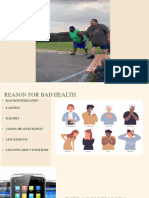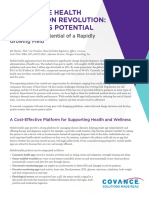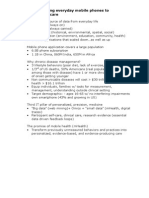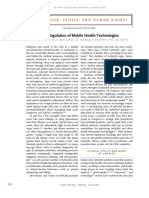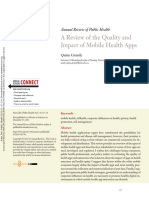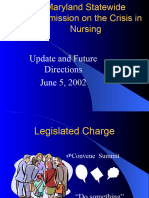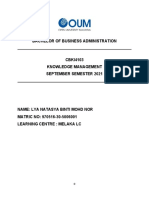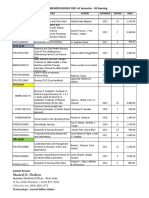0% found this document useful (0 votes)
28 views38 pagesLecture 7 240314
The document discusses mHealth, which involves using mobile technologies to enhance healthcare services and outcomes, particularly in India, where there is significant potential due to a large mobile user base. It highlights various types of care delivered through mHealth, the barriers to adoption, and the importance of integrating behavioral changes to improve user engagement. Additionally, it addresses the need for effective evaluation and reimbursement models for mHealth technologies to maximize their value.
Uploaded by
Avinash KumarCopyright
© © All Rights Reserved
We take content rights seriously. If you suspect this is your content, claim it here.
Available Formats
Download as PDF, TXT or read online on Scribd
0% found this document useful (0 votes)
28 views38 pagesLecture 7 240314
The document discusses mHealth, which involves using mobile technologies to enhance healthcare services and outcomes, particularly in India, where there is significant potential due to a large mobile user base. It highlights various types of care delivered through mHealth, the barriers to adoption, and the importance of integrating behavioral changes to improve user engagement. Additionally, it addresses the need for effective evaluation and reimbursement models for mHealth technologies to maximize their value.
Uploaded by
Avinash KumarCopyright
© © All Rights Reserved
We take content rights seriously. If you suspect this is your content, claim it here.
Available Formats
Download as PDF, TXT or read online on Scribd
/ 38

